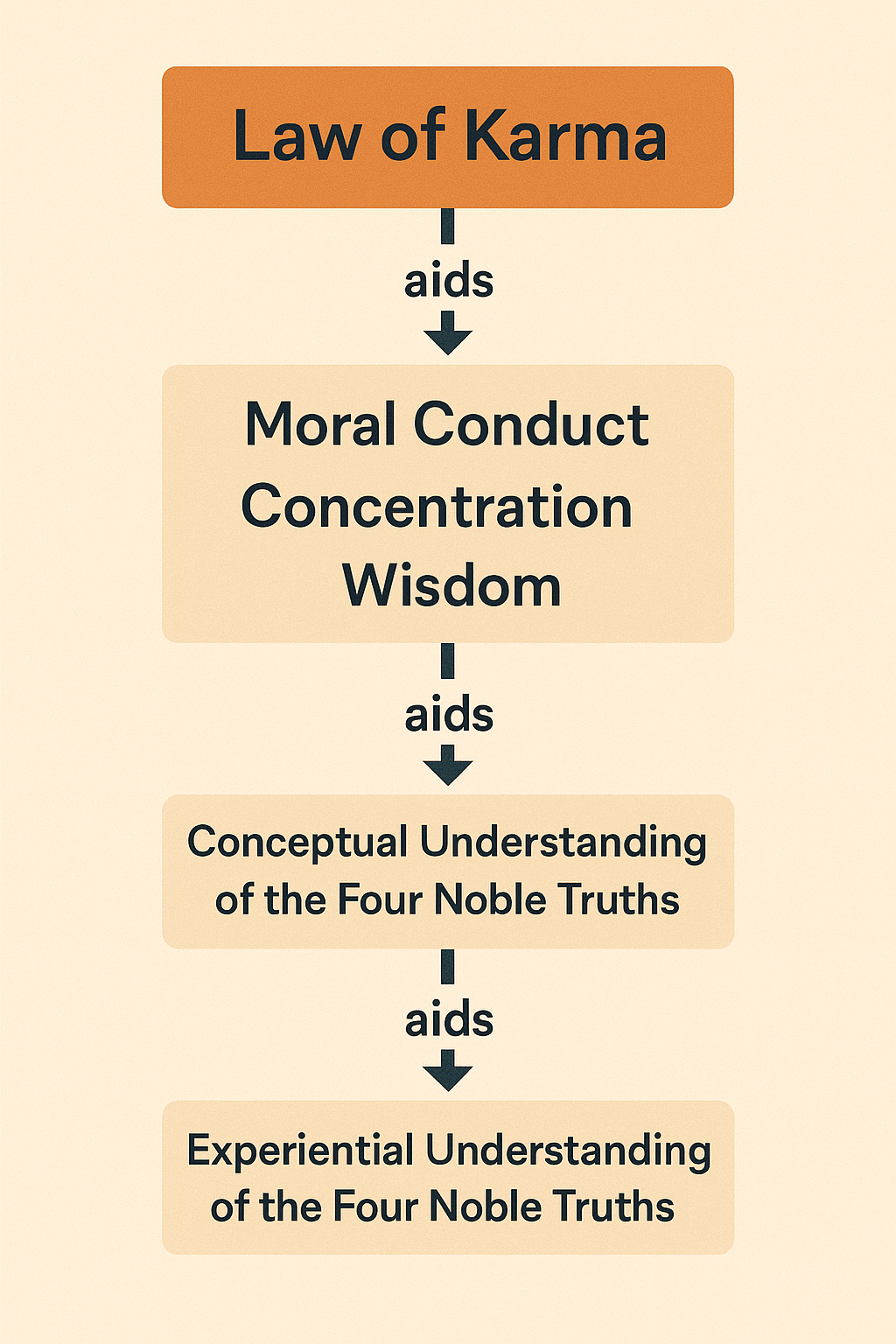Right View (正見, sammā-diṭṭhi) is the first element of the Noble Eightfold Path (八正道, aṭṭhaṅgika-magga). When my teacher said, “The first element of the Noble Eightfold Path is not Right View for nothing,” it led me to re-recognize the importance of this item. Below, I will briefly organize the structure of Right View based on Bhikkhu Bodhi’s The Noble Eightfold Path, and finally, conclude with its definition.
The Role and Importance of Right View
Right View is the starting point and the guiding compass for practice. Without Right View, there is a risk of losing one’s way on the path of practice. It serves as the standard for our attitudes, actions, and value judgments. All actions (業, kamma) and their results (果報, vipāka) originate from one’s view. Right View leads to liberation in accordance with truth, while wrong view, based on falsehood, leads to suffering.
Two Kinds of Right View
Right View includes Mundane Right View (世間正見, lokiya sammā-diṭṭhi) and Supramundane Right View (出世間正見, lokuttara sammā-diṭṭhi). Mundane Right View is the accurate understanding of the law of kamma.
“All beings are the owners of their kamma, heirs of their kamma. They originate from their kamma, are bound by their kamma, and are supported by their kamma. Whatever kamma they perform, whether good or bad, they will be its heirs.”
―The Buddha
Supramundane Right View is the correct understanding of the Four Noble Truths (四聖諦, cattāri ariya-saccāni). The purpose of correctly understanding the Four Noble Truths is to be completely liberated from the cycle of transmigration (輪迴, saṃsāra). Understanding the Four Noble Truths involves: 1) Conceptual Understanding (Right View in Conformity with the Truth) and 2) Experiential Understanding (Right View Penetrating the Truth).
Stages of Development of Right View
1. Preliminary Right View for Practice
The practitioner accepts and holds the law of kamma. Knowing that results are received according to the type of intention (意圖, cetanā), they strive to perform moral actions. They accept and uphold the precepts (戒, sīla) established for moral conduct. Upholding the precepts leads to concentration and tranquility (定, samādhi), and concentration and tranquility lead to wisdom (慧, paññā).
2. Right View in Conformity with the Truth (Conceptual Understanding of the Four Noble Truths)
Accordingly, the practitioner gradually accepts the Four Noble Truths. They know that the essence of existence is suffering (苦, dukkha), and its cause is craving (渴愛, taṇhā). Therefore, they understand that if craving is extinguished, suffering is extinguished, and they strive to follow the path that leads to the cessation of suffering. This is understood intellectually and occasionally experienced in daily life. Precepts (戒, sīla), concentration (定, samādhi), and wisdom (慧, paññā) strengthen the wisdom in conformity with the truth, and the wisdom in conformity with the truth, in turn, develops precepts, concentration, and wisdom.
3. Right View Penetrating the Truth (Experiential Understanding of the Four Noble Truths)
The practitioner penetrates the reality of existence with highly developed concentration and insight. They see and know, feel and understand, that the five aggregates (五蘊, pañca-khandha) are impermanent (無常, anicca), suffering, and not-self (無我, anattā). They experience Nirvāṇa (涅槃, nibbāna) and completely penetrate the Four Noble Truths. They go to Nirvāṇa.
In summary, Right View is
The wisdom that, mundanely, understands the law of kamma, and supramundanely, understands the Four Noble Truths, ultimately leading to the complete cessation of all suffering.



답글 남기기